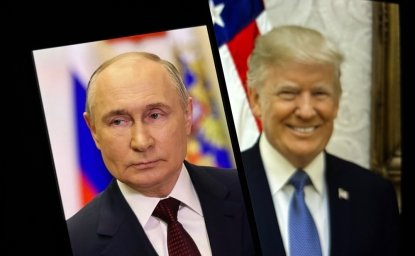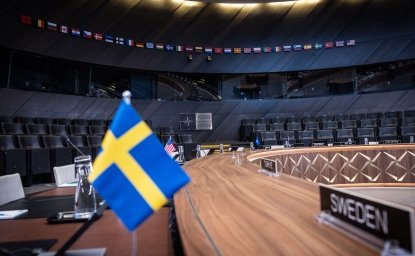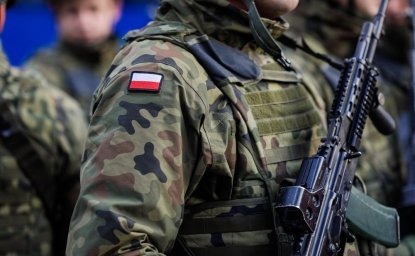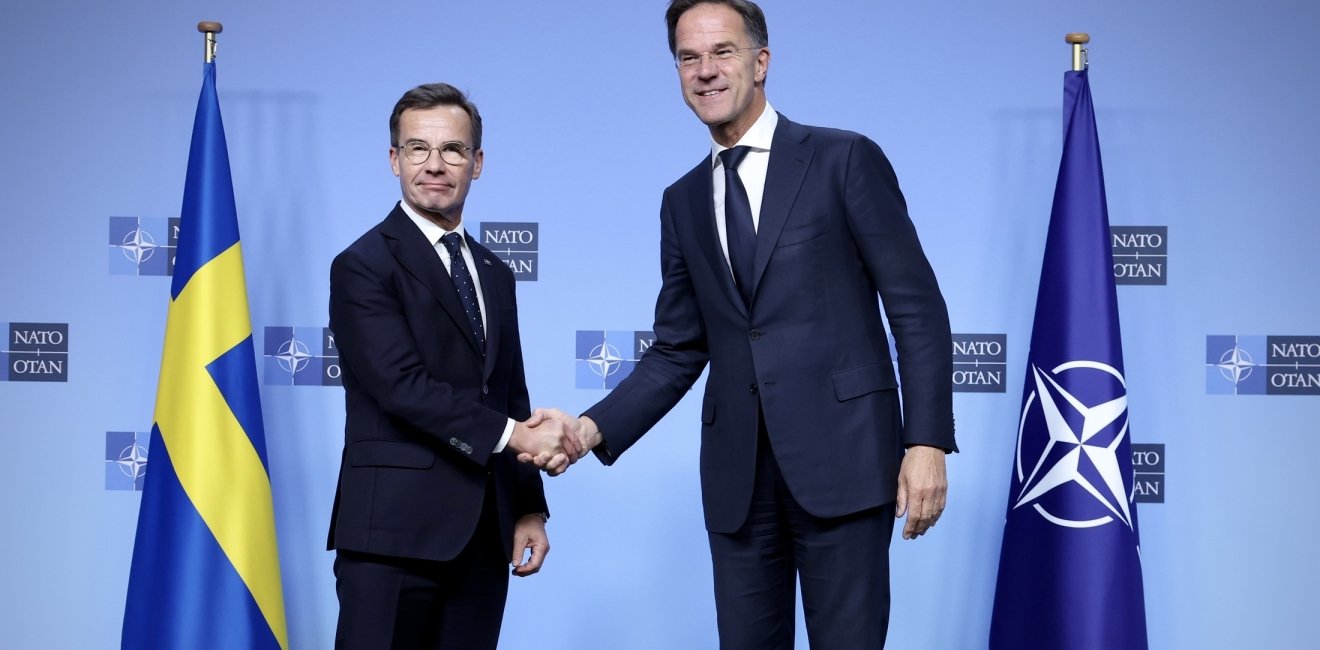On October 15, the Swedish government introduced a comprehensive defense bill aimed at significantly enhancing the country’s military capabilities over the next decade. The bill outlines an investment of approximately $36 billion between 2024 and 2035, marking one of Sweden's most substantial military investments in recent decades. More importantly, this sizeable allocation reflects the country’s shifting defense priorities in the context of its recent NATO membership and the growing security challenges posed by Russia.
The bill is designed to modernize Sweden’s military assets, strengthen its readiness, and enhance its technological edge. Notably, roughly $100 million is allocated for space capabilities through 2032 in order to both expand the infrastructure at the Esrange Space Center and to begin launching military satellites by the late 2020s. Additional funds are earmarked for modernizing Sweden’s Gripen fighter jet fleet, upgrading surface-to-air missile systems, and bolstering cyber defense. Manpower challenges, particularly in recruiting and training conscripts and specialized personnel, are also addressed although it is unlikely these challenges will be fully resolved in the near term. The government’s ambitious target of 12,000 conscripts, for instance, has been postponed to 2035.
In essence, the bill reflects Sweden’s evolving role in European and transatlantic security and highlights the key actors, geographies, and strategic priorities for the country in the coming years.
At the heart of Sweden’s new and still-evolving defense strategy is its integration into NATO. The new defense bill demonstrates a clear preference for NATO over the EU as Sweden’s primary security partner. While the EU remains essential for economic and diplomatic engagements, Sweden views NATO as a more robust defense partner. This choice is rooted in Stockholm’s skepticism about the EU’s ability to act as a cohesive military entity due to, amongst other things, its slow decision-making processes.
Stockholm has long been wary of the EU's efforts to develop strategic autonomy in defense, fearing such initiatives could weaken the transatlantic link with the US. This concern is perhaps best demonstrated in its opposition to the establishment of the European Peace Facility. NATO, on the other hand, offers Sweden established mechanisms for direct defense and technological cooperation through channels like the Defence Innovation Accelerator for the North Atlantic (DIANA). These mechanisms are crucial in light of Sweden’s assessment of the Russian threat as an immediate issue. Additionally, the EU’s defense planning is seen as vulnerable to domestic political developments in member states which could block or delay initiatives. Most importantly, enhanced EU security collaboration would diminish the roles of key non-EU allies like Norway, the UK, Canada, and the US.
The new defense bill demonstrates a clear preference for NATO over the EU as Sweden’s primary security partner. While the EU remains essential for economic and diplomatic engagements, Sweden views NATO as a more robust defense partner.
While recognizing the growing importance of the Arctic, the new defense bill signals that Sweden will assume a secondary role in the region. Instead of expanding its physical military presence in the Arctic, Sweden’s defense priorities are focused on the Baltic Sea region where a combination of factors, including increased hybrid threats and Russia’s expanded military activities, have turned the region into a contested, and highly fragile, zone. In fact, the country’s Defence Minister, Pål Jonson, and Swedish military leaders have repeatedly emphasized the strategic importance of the Baltic region, particularly the island of Gotland, which could be a target in a hypothetical future war with Russia. Sweden recognizes that securing the Baltics is critical not only for its national defense, but also for the collective security of its Nordic and European allies. This is best reflected in the country’s announced investment in modernizing its air defense systems and its fleet of fighter jets, which underscores its commitment to maintaining a military edge in the Baltic.
In the Arctic, Sweden’s objective is to remain a key player without significantly boosting its physical military presence there. The defense bill allocates substantial resources to space capabilities in what appears to be a conscious attempt at positioning Sweden as a critical enabler in Arctic security. This approach highlights a wider trend of relying on advanced technologies to maintain security in remote and harsh environments where large-scale military deployments are challenging. Sweden’s decision to join the recently announced Northlink satellite communications initiative aligns with this strategy. It allows Stockholm to leverage its technological expertise to secure Arctic communication networks deemed vital for both NATO and Sweden’s own defense.
In addition, turning Esrange Space Center into a premier launch site for both NATO and European military satellites enables Sweden to fill the current lack of orbital satellite launch capabilities in continental Europe and assume a greater role in supporting space-based communications, navigation, and intelligence capabilities of its allies. With NATO having declared space an operational domain, Sweden’s space strategy offers an important opportunity to harmonize NATO and EU space efforts and foster greater coordination and resilience in space security. By focusing on space, in other words, Sweden not only addresses its Arctic security needs but also positions itself as a bridge between NATO and the EU. Both organizations have separate space programs, but Sweden’s expertise and resources in conjunction with its membership in both the EU and NATO could help unify these efforts for greater efficiency and collective security.
In a marked departure from its historical defense posture, finally, Sweden is also exploring greater military engagement in Asia. This development, highlighted by the Defence Minister’s remarks at the Shangri-La Dialogue in Singapore, reflects Sweden’s recognition of Asia’s growing importance for global security and the rapidly emerging security nexus between the Euro-Atlantic and Indo-Pacific regions; a view shared by its allies in the US, NATO, and the EU. As outlined in its Indo-Pacific Strategy, however, the prospect of stationing large numbers of troops remains highly unlikely for now, with efforts focused instead on expanding technological and defense-industrial links between Sweden and Asian democracies. This is perhaps best exemplified by recent cooperation agreements between Sweden’s Space Corporation (SSC) and companies from South Korea and India. Nevertheless, the fact that high-ranking officials now speak openly about military cooperation with Asian nations, and are open to embedding Swedish troops, albeit in small numbers, in the region could have far-reaching implications for Sweden’s role as a trusted diplomatic facilitator on the Korean Peninsula, its bilateral relations with China, and its broader exposure to strategic developments in the Indo-Pacific.
Turning Esrange Space Center into a premier launch site for both NATO and European military satellites enables Sweden to fill the current lack of orbital satellite launch capabilities in continental Europe and assume a greater role in supporting space-based communications, navigation, and intelligence capabilities of its allies.
Sweden’s new defense bill represents a significant shift in its military priorities. By prioritizing NATO integration, heavily investing in Baltic security, exploring new military partnerships in Asia, and enhancing space capabilities to solidify its Arctic role, Sweden is positioning itself as a versatile and forward-looking defense actor determined to adapt to the rapidly changing global security landscape. However, the bill also highlights ongoing challenges; particularly manpower shortages. The Swedish Armed Forces face a growing need for specialized personnel, such as defense meteorologists, at a time when the integration into NATO is expected to increase demand for such expertise.
Looking ahead, Sweden will likely seek to balance its traditional regional commitments with new opportunities and threats in space and the Indo-Pacific. By leveraging advanced technology and prioritizing NATO, Sweden is carving out a leadership role in Baltic security and as a critical enabler in Arctic defense. Its investments in space will further cement its position as a bridge between NATO and the EU and thus ensure its continued relevance to the collective defense of Europe and the North Atlantic. The challenge will be to strike the right balance between traditional threats in its immediate neighborhood and emerging future challenges and do so in a cost-efficient manner.
Author


Global Europe Program
The Global Europe Program is focused on Europe’s capabilities, and how it engages on critical global issues. We investigate European approaches to critical global issues. We examine Europe’s relations with Russia and Eurasia, China and the Indo-Pacific, the Middle East and Africa. Our initiatives include “Ukraine in Europe”—an examination of what it will take to make Ukraine’s European future a reality. But we also examine the role of NATO, the European Union and the OSCE, Europe’s energy security, transatlantic trade disputes, and challenges to democracy. The Global Europe Program’s staff, scholars-in-residence, and Global Fellows participate in seminars, policy study groups, and international conferences to provide analytical recommendations to policy makers and the media. Read more


Polar Institute
Since its inception in 2017, the Polar Institute has become a premier forum for discussion and policy analysis of Arctic and Antarctic issues, and is known in Washington, DC and elsewhere as the Arctic Public Square. The Institute holistically studies the central policy issues facing these regions—with an emphasis on Arctic governance, climate change, economic development, scientific research, security, and Indigenous communities—and communicates trusted analysis to policymakers and other stakeholders. Read more

Explore More
Browse Insights & Analysis
Trump Speaks with Putin in Effort to End Russia-Ukraine War

From Partner to Ally: Sweden’s First Year in NATO

“Security, Europe!”: Poland's Rise as NATO's Defense Spending Leader



